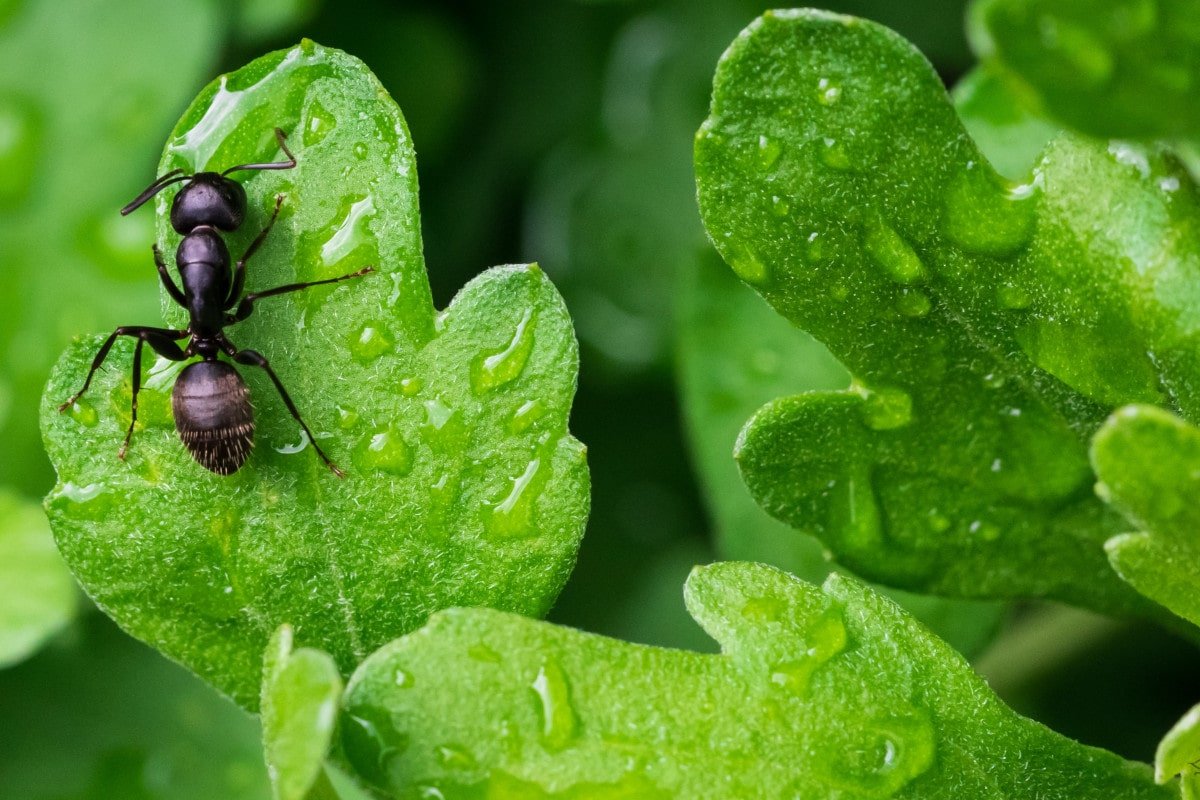Pop quiz: Guess which types of animals feature prominently on “Most Hated” lists.
If you said bugs, you’re correct! Creepy-crawlies such as mosquitos, spiders, cockroaches, and flies frequently make the top of the list.
The one positive thing to say about those insects is that at least they’re easy to identify.
But what about tiny black bugs you see crawling around your home or garden?
What exactly are those black tiny bugs that bite, make you itch, or just sit there on your sheets?
How can you tell which ones are harmless, which are pests, and which are potentially dangerous?
And, more importantly, how can you get rid of them?!
In this post, I’ll take a deep dive into the world of little black flying bugs, tiny biting black bugs, and every type of bug in-between.
We’ll also talk about how to get rid of little black bugs to keep your home delightfully bug-free.
Let’s get started! Here are the main types of tiny black bugs you’re likely to find around at home.
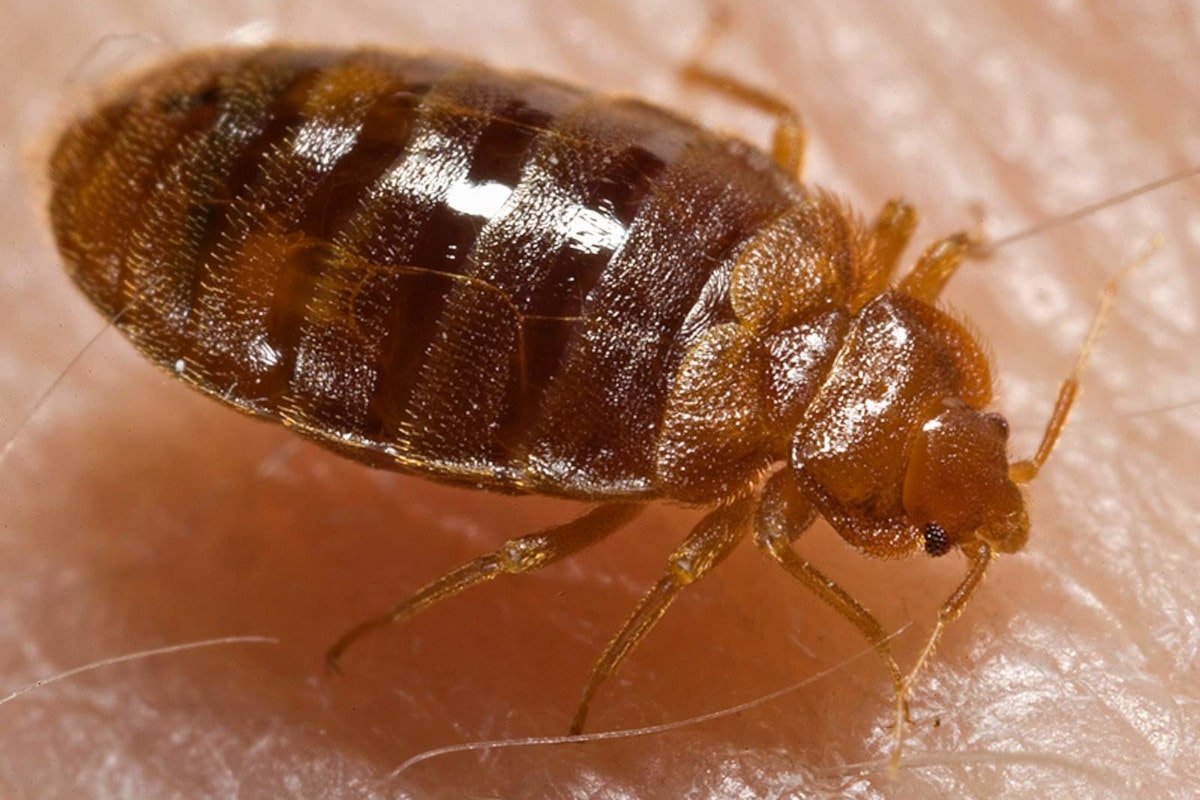 Worried you have bed bugs? Here’s how to identify these black tiny bugs that bite.
Worried you have bed bugs? Here’s how to identify these black tiny bugs that bite.
1. Bed Bugs (Black Tiny Bugs that Bite)
Imagine sharing your sleeping space with bugs.
Gross, right?
Alas, that’s exactly what can happen when you get bed bugs.
If you’re in the UK, you may recall when these tiny black bugs made headlines back in 2018 due to the unusually hot summer weather!
But the truth is that bed bug infestations have been on the rise around the world for several decades, largely because of resistance to chemical treatments.
Contrary to popular belief, bed bugs have nothing to do with how clean (or dirty) your home is. You can pick up these hitchhikers from hotels, public transportation, second-hand clothing, or even used furniture.
They exist solely on animal blood (…mainly humans’) and can survive for up to a year(!) between “meals.”
How to Identify Bed Bugs
Bed bugs are super small, only reaching a length of 2.0-2.5 mm as adults.
That’s about the size of an apple seed.
Although they may resemble tiny eight-legged arachnids, bed bugs have six legs.
They’re flat and oval-shaped and typically light brown in colour.
After a nice tasty meal, however, they swell and turn darker, making them easier to identify. They cannot fly but they can move quickly over furniture, walls, and floors.
Bed bugs are experts at hiding, often taking up refuge in bedframes and mattresses
If you see a bed bug without actively looking for it, this is a sign of severe infestation.
More often than not, you’ll only see signs of bed bugs, such as itchy welts on your skin or tiny bloodstains on your sheets or pillowcases.
If there’s one piece of good news here, it’s this:
Bed bugs don’t carry or transmit any diseases.
Although the idea of bed bugs is gross and getting rid of an infestation can be a nightmare, they won’t make you sick.
In fact, many people have no reaction to bed bug bites, which can make these tiny black bugs even more difficult to identify!
How to Get Rid of Bed Bugs
If you suspect the tiny bugs in your home could be bed bugs, attack them at their source.
Strip your bedding and wash everything on the hottest water cycle.
For items that can’t be washed, such as pillows or stuffed animals, toss them in the dryer on the hottest cycle for 30 minutes.
Meanwhile, use a stiff brush to scrub every inch of your mattress (top, bottom, and sides). Follow up with a vacuum and then enclose your mattress with a plastic zippered cover. Remember, bed bugs can survive for up to a year without eating, so keep the cover on your mattress for at least a year to ensure they all die.
What if the infestation is severe?
Your best bet is to call a professional pest control company for a chemical treatment to kill bed bugs. They may also suggest that you get rid of your old mattress and bedding and “start fresh” with a new set.
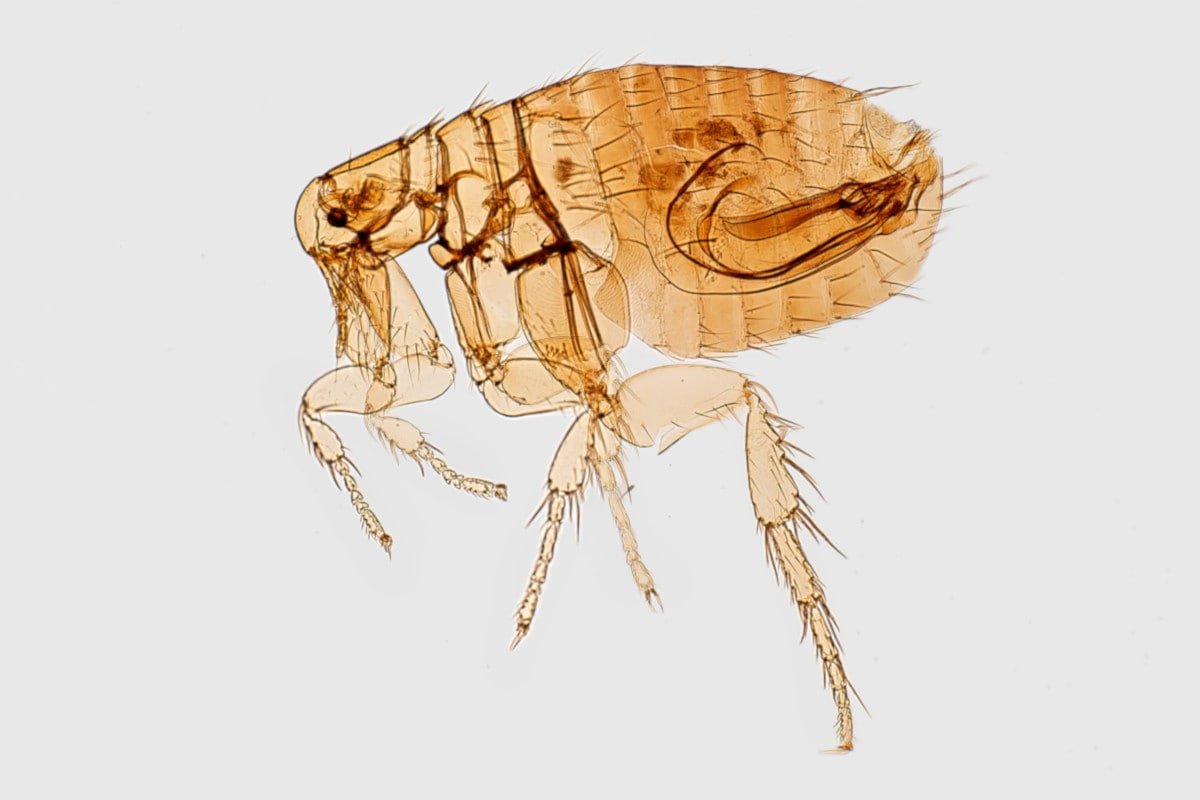 Fleas are common tiny biting black bugs that most pet owners are all too familiar with!
Fleas are common tiny biting black bugs that most pet owners are all too familiar with!
2. Fleas (Tiny Biting Black Bugs)
Another common invader in our homes is the dreaded flea.
These tiny black bugs are parasites that rely on hosts to survive.
In the wild, they cling to furry animals. But in a domestic setting, they may choose your beloved dog or cat as their “host”.
As they reproduce, you may find fleas in your bedding, carpets, laundry, and furniture.
Another sure sign of fleas is if your pet suddenly starts itching and scratching.
While bed bugs are harmless, fleas can transmit a number of diseases to both humans and animals.
This makes it vital to identify and eliminate them — pronto!
How to Identify Fleas
Fleas are narrow, wingless, tiny black bugs.
They range anywhere from 0.1-0.32 cm and usually resemble “specks” of black pepper.
Although fleas cannot fly, they’re astonishing jumpers.
They can catapult themselves hundreds of times their body length, and the best jumpers can leap up to two feet in the air!
How to Get Rid of Fleas
You don’t want these little acrobats taking up residence in your home, so how can you get rid of them?
Like bed bugs, fleas have a long life cycle, so it will take some time and effort to clear up a severe infestation.
Start by thoroughly washing and sanitising all floors, rugs, bedding, and pet bedding.
Next, you need to give your pet(s) a complete flea treatment, including a warm bath with soap and a thorough combing with a flea comb.
Pay special attention to their neck, face, and the front of the tail — the areas where fleas often thrive.
Talk to your veterinarian about specialised flea medication for your pet to prevent future occurrences.
Finally, you’ll want to contact a pest control company to treat your home and yard with flea-killing products.
You may need follow-up treatments every 5-10 days for several weeks to ensure you kill fleas at every stage of their life cycles.
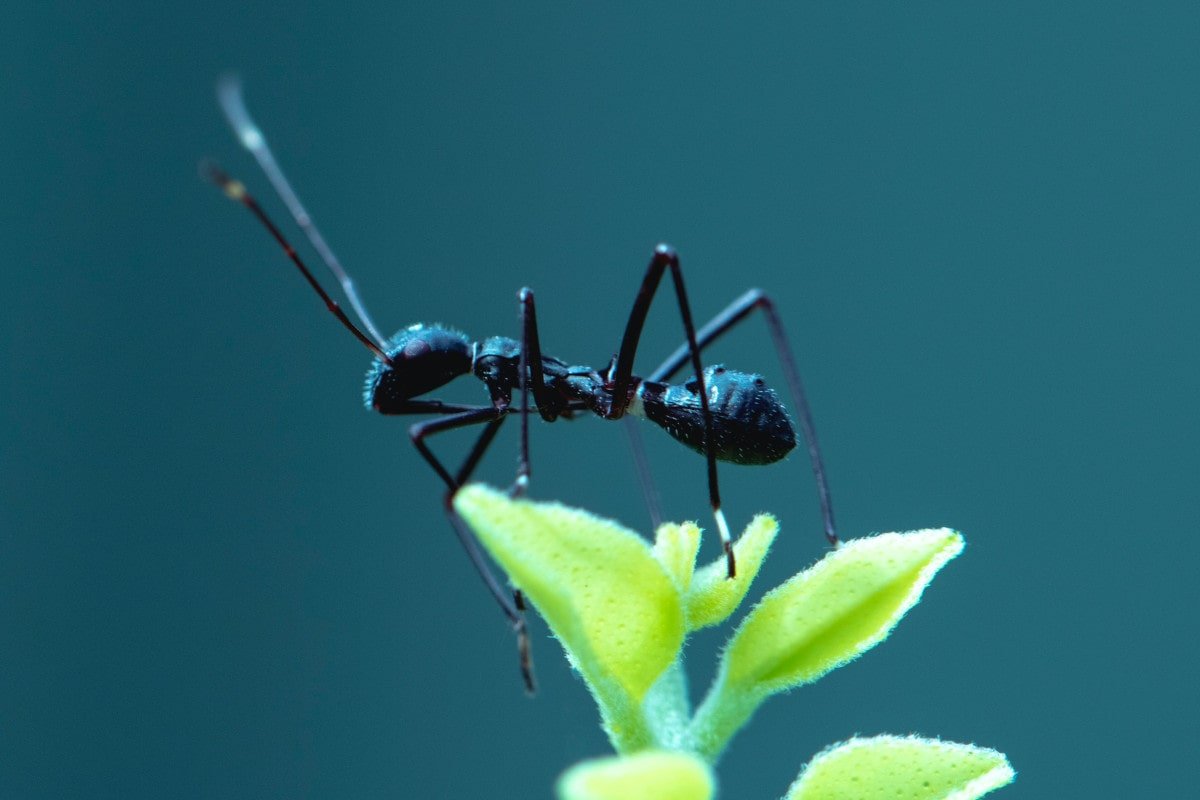 Of the little black biting bugs on this list, ants are probably the most easily-identifiable.
Of the little black biting bugs on this list, ants are probably the most easily-identifiable.
3. Ants (Small Black Biting Bugs)
Would you believe there are over 10,000 different species of ants in the world?
While most of them live deep in tropical forests, some species thrive in cooler, more temperate regions.
In the UK, the most common types of ants are black garden ants, sugar ants, carpenter ants, and (the appropriately named) common black ants.
Although ants are a nuisance, most do not bite humans and they pose little or no threat to your home or your health.
The one exception is the carpenter ant, which can damage wooden elements inside your home.
How to Identify Ants
You may not know which type of ant you’re looking at, but it’s pretty easy to distinguish ants from other tiny black bugs.
Most UK species range from 2-5 mm with a noticeably developed head and abdomen and a smaller, slimmer waist and thorax.
Some ants are solid black, while others may appear brown, yellow, or even red.
They live in colonies and you’ll often find them moving together in long lines along your floorboards, countertops, and kitchen cabinets.
How to Get Rid of Ants
If you want to go the all-natural route, try sprinkling ground black or red pepper along your floorboards and behind appliances.
You could also mix white vinegar with water and spray the areas where you see ants moving.
Another idea is to soak cotton balls with ant-deterring essential oils, such as peppermint, cinnamon, eucalyptus, or tea tree oil.
Place the cotton balls in the corners of your home or other high-traffic areas, but do be mindful if you have children or pets!
For a heavier-duty treatment, put on your gloves and treat your home with Borax, boric acid, or commercial ant killer.
You could also try placing bait traps around your kitchen, bathroom, and behind appliances.
If all else fails, contact an exterminator to discuss other ant-killing options.
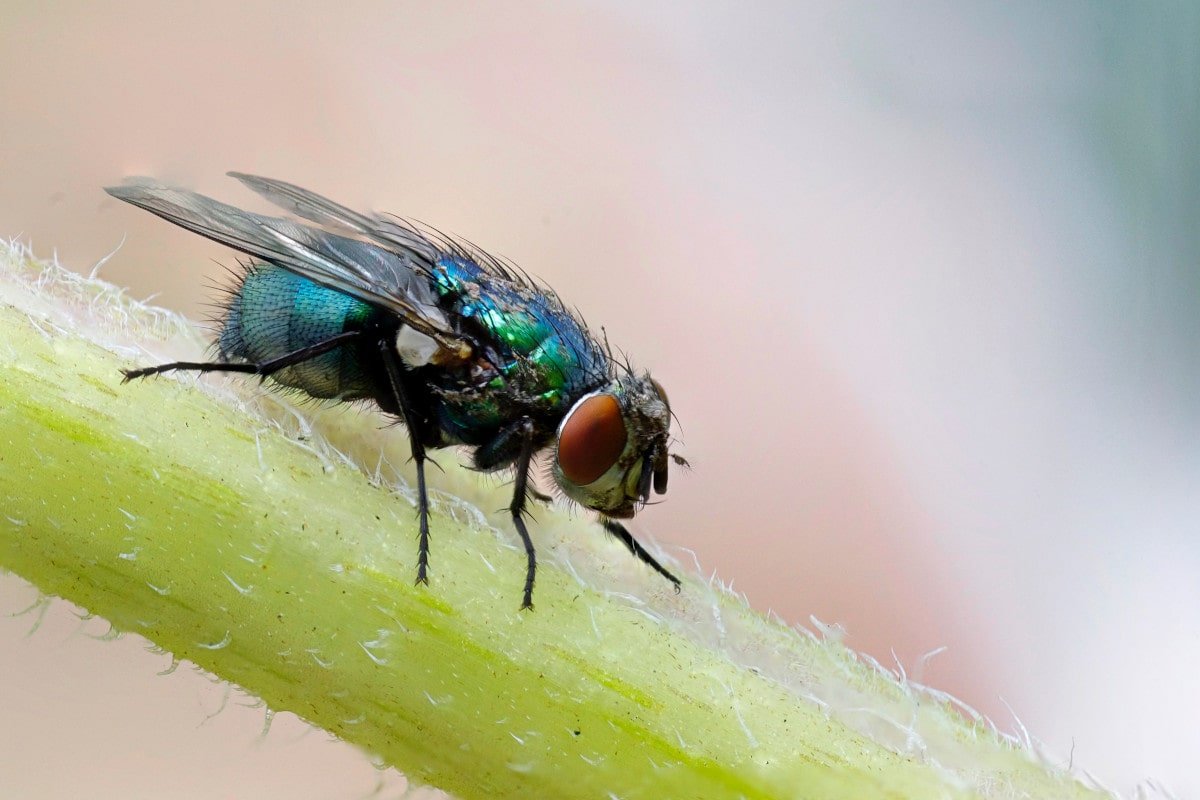 Little black flying bugs giving you trouble? Here are a few tips on how to identify and get rid of them.
Little black flying bugs giving you trouble? Here are a few tips on how to identify and get rid of them.
4. Flies (Little Black Flying Bugs)
Trying to It’s more than likely that one type of fly or another has invaded your living space at some point in time.
But what exactly are those little black flying bugs?
Two of the most common species to be aware of are the fruit fly and the fungus gnat.
While neither bite nor carry diseases, they can be very annoying (and tough to get rid of).
How to Identify Flies
Fruit flies are tiny — about an eighth of an inch long — with a brownish head and body and bright red eyes.
Meanwhile, gnats are about half an inch long with black bodies, heads, and eyes.
You’ll often find fruit flies buzzing around garbage, compost, or fresh produce.
Gnats tend to gather around stagnant water sources, such as garden puddles or overwatered houseplants.
How to Get Rid of Flies
The best way to get rid of flies is to get rid of the things that attract them.
In the case of fruit flies, keep your kitchen sparkling clean and dry.
Keep fresh fruits and vegetables covered and regularly changes your sponges and dish towels.
You could also set up fruit fly “traps” by putting apple cider vinegar and a few drops of dish soap in a shallow jar.
Gnats feed on the decomposing matter in water, so the best way to keep gnats away is to keep your home and garden as dry as possible.
If that’s not enough, invest in some sticky traps for the wettest/dampest areas.
You could also pour a mixture of water and bleach down your drains in case any gnats are hanging out in your pipes.
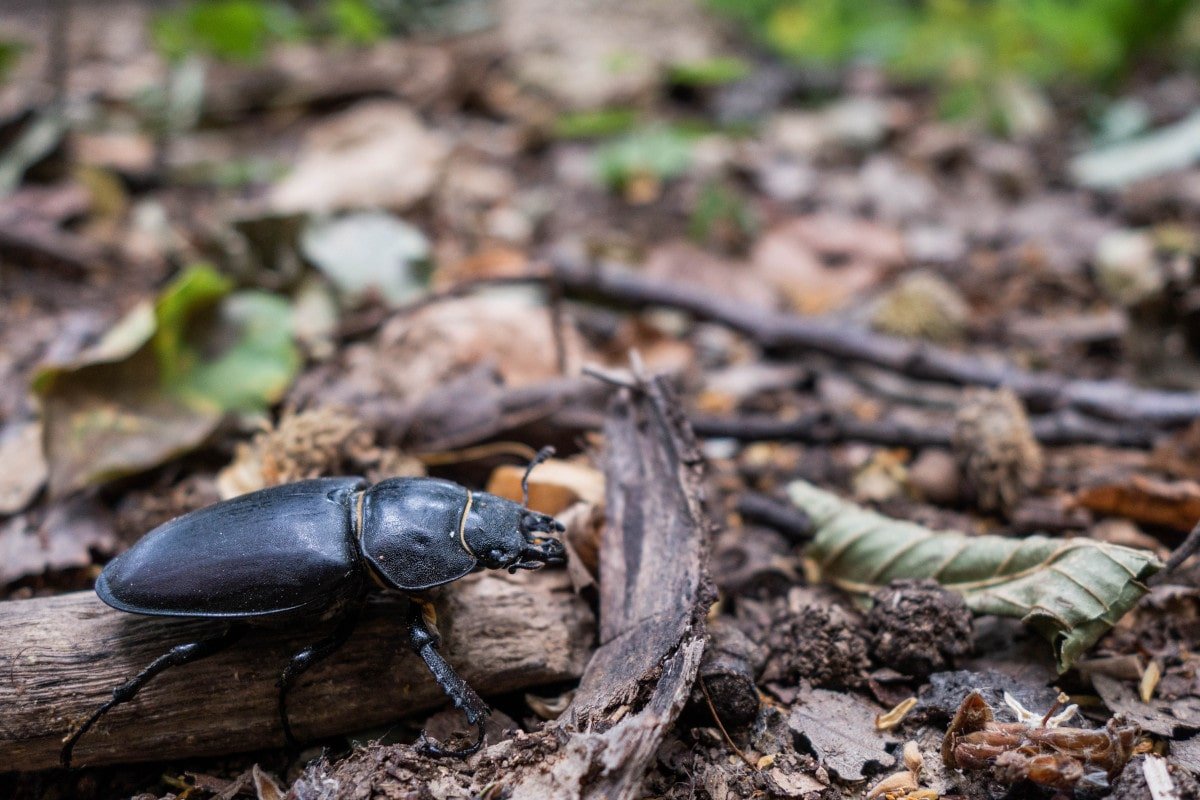 Beetles are little black bugs that come in many different shapes and sizes. Here are 3 of the most common ones to show up in peoples’ houses:
Beetles are little black bugs that come in many different shapes and sizes. Here are 3 of the most common ones to show up in peoples’ houses:
5. Beetles (More Black Tiny Bugs!)
A final group of tiny black bugs we’ll discuss are beetles. Most species live in rural wooded areas, but three species often find their way into homes:
- Carpet beetles
- Biscuit beetles
- Ground beetles
Although beetles can technically bite humans, they rarely do.
They don’t carry diseases or pose a health threat to people or pets, which is good news. They also don’t live in colonies or swarms, which means you may only find one or two.
Some species, such as the stag beetle, are quite large, but most that make their way into your home are smaller and harder to identify.
How to Identify Beetles
Carpet beetles are about 4 mm long.
They appear brown or beige with tiny black and white dots. They gravitate towards carpets, curtains, clothing, and any other soft materials.
Biscuit beetles are reddish-brown in appearance and grow to a size of 3 mm. They have a serious sweet tooth and will head straight to your pantry in search of sugary carbs.
Ground beetles are significantly larger, sometimes as big as 25 mm in length. They appear black, brown, or violet and they’re drawn to warm, cosy places.
How to Get Rid of Beetles
Although none of these beetles pose a serious threat to your health, no doubt you’d like to say goodbye to them anyway.
Give your floors and carpets a thorough vacuuming if you spot any carpet beetles.
It’s also worth checking your loft, attic, and roof for bird’s nests, as these are popular breeding spots for carpet beetles.
Biscuit beetles are drawn to open packages of flour, cereals, cakes, and other sweets.
Toss out any infested food items, clean up any crumbs, and seal all your carbs in airtight containers to prevent future invasions.
You’re unlikely to find more than one ground beetle inside your home.
Chances are it just crawled inside looking for warmth! If you want to remove it, simply pick it up or place it on a small object and carry it outside.
Say Goodbye to Those Tiny Black Bugs
Whether the tiny black bugs in your home fly, bite, crawl, or sting, one thing is for sure — they’re unwelcome guests!
With any luck, you can use the information presented above to identify those little black bugs once and for all.
Once you recognize who your intruders are, you’ll know exactly what to do to get rid of them.
Of course, there are plenty of small black biting bugs that don’t appear on our list above!
If you’re having trouble identifying whatever is crawling around your home, your best bet is to contact a pest control company in your area.
They can tell you exactly what those tiny bugs are and outline the best course of action to banish them from your living space.
After all this talk of little black biting bugs, you’re probably ready to change the subject!
Luckily for you, we have loads of great advice about how to become healthier, wealthier, and wiser. Stay right here and keep browsing the site for other interesting articles like this one.

